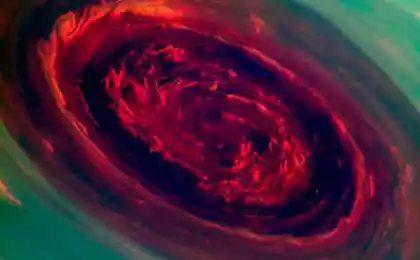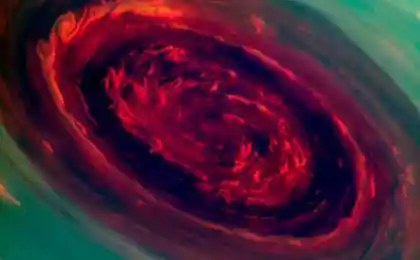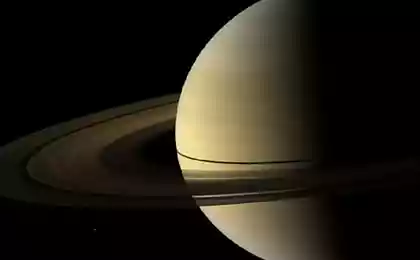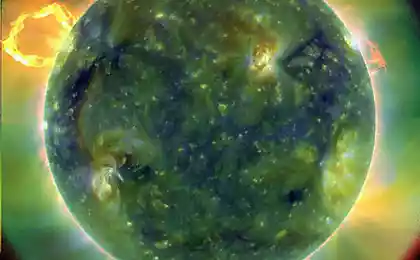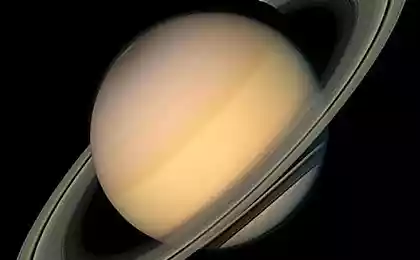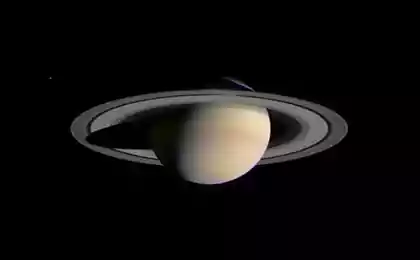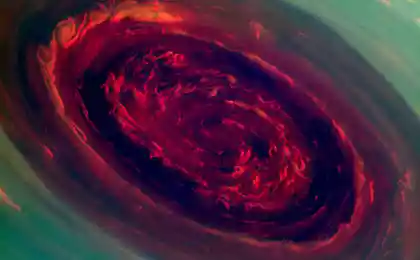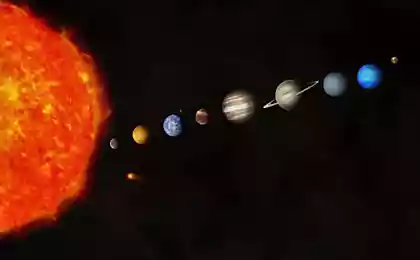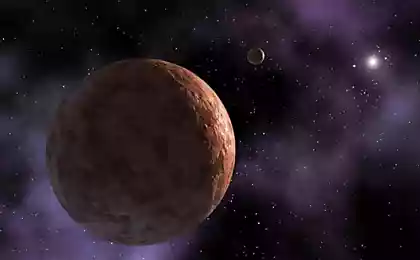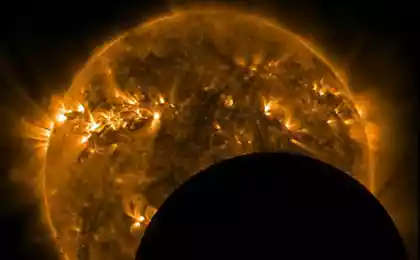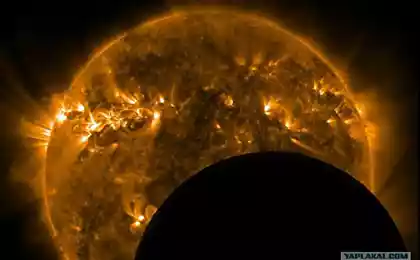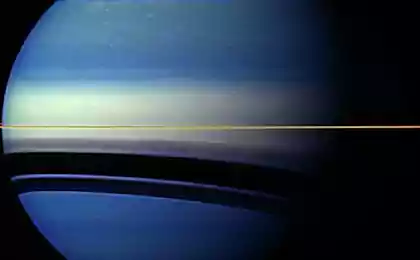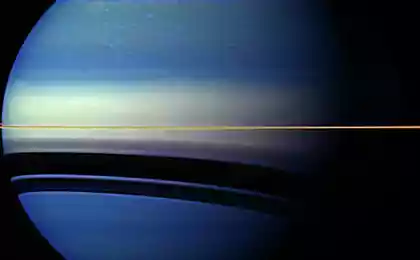1340
Scientists have discovered the birthplace of Saturn
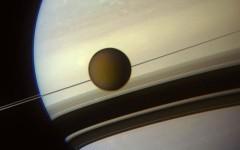
The position of Saturn in the solar system has not changed since then, as a planet, known for its rings, was formed
This became known thanks to the study of the chemical composition of its largest moon - Titan.
The results, published in the ArXiv.org, affect existing theories about how planets move during early development of the Solar System.
A study conducted by astronomers from the University of New South Wales, studied the relation in Titan's atmosphere of hydrogen and its isotope deuterium.
Previous research has shown that the ratio of deuterium to hydrogen in the ice, condensed from the very first cloud that was forming a cradle for our solar system, varies depending on the distance from the sun early.
Understanding these relationships, astronomers can determine the exact place where the planetary bodies were formed and how far they have migrated since.
Measuring the ratio of hydrogen-deuterium Titan allows researchers to pinpoint where Saturn was formed.
"The results were amazing - said study lead author Dr. Lukin Kedziyora-Chadzer. - For us it was a complete surprise to see that the giants in our solar system is largely changed their locations. This means that a significant movement of the planets over time that we see in other star systems, probably has nothing to do with our solar system, which seems to occur quite different processes ».
Hot Jupiter
Planetary movement has become a key to understanding the type of exoplanets known as "hot Jupiters" orbiting extremely close to the stars located host.
Scientists can not believe that these planets formed in what is now located. It is assumed that they must have migrated deeper from more distant orbit.
Understanding of planetary movements will help explain many features of our solar system, including the existence of ice giants such as Uranus and Neptune.
"Both these planets are likely to have formed closer to the Sun, because in order to form in their current location, they would need a lot of material that could be just around the star in its protoplanetary disk," - says study co-author, Dr. Jonty Horner.
Some theories suggest that Uranus and Neptune may have changed their positions before migrating further, while other theories suggest that the ice giants formed between the orbits of Jupiter and Saturn.
These theories also explain the orbits of small icy objects in the Kuiper Belt - the so-called plutinos who occupied their present location when Neptune migrated.
According to Horner, the answer may be in the fact that some planets have migrated long distances than others.
"If Jupiter migrated into the system would be less material to form Saturn - said Horner. - And this is the material that forms the planet or to join with them in the interaction, stimulates the movement. Thus, it can be argued that Saturn has not moved to a considerable distance ».
Not of this world
"The idea that Saturn formed in one place, and then migrated somehow returned to its original location, not as absurd as it may seem at first glance, - says Dr Simon O'Toole of the Australian Astronomical Observatory. - It may sound strange, but many of our models suggest that the planet is sometimes moved to their locations, transferring their orbits in the opposite direction. There are models for other star systems, showing that the position of the planet is changing, because it interacts gravitationally with the other planets in the system. "

